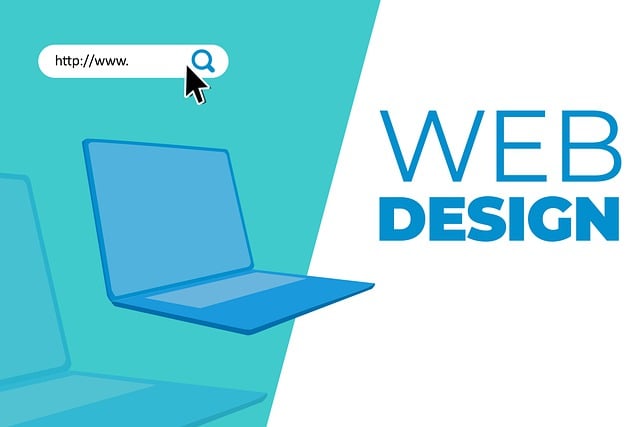WordPress Design has democratized website creation with its intuitive Content Management System (CMS), accessible to both technical and non-technical users. Its drag-and-drop functionality, vast library of themes and plugins, and customization options empower designers to create professional websites reflecting clients' unique visions. The right WordPress theme, selected based on site purpose, audience, mobile responsiveness, plugin compatibility, and customization capabilities, is crucial. Plugins offer diverse functionalities like SEO optimization (Yoast, Rank Math), security (Wordfence, Sucuri), and e-commerce solutions (WooCommerce), enhancing website performance and user experience. Efficient coding practices, regular updates, and optimized content are key to achieving high search engine rankings and boosting organic traffic.
WordPress has revolutionized web design, becoming a powerful Content Management System (CMS) that empowers users to create dynamic websites with ease. This article explores the multifaceted world of WordPress design, from its core benefits and key features to essential tips for customization, theme selection, and plugin optimization. Learn how to harness its potential for SEO-friendly, high-performing online presences. Discover the secrets to crafting stunning WordPress designs tailored to your needs.
Understanding WordPress: A Content Management System (CMS)

WordPress is more than just a platform; it’s a powerful Content Management System (CMS) that has revolutionized website creation. At its core, WordPress allows users to build and manage websites with ease by providing an intuitive interface for creating and organizing content. This user-friendly nature makes it accessible to both technical and non-technical users, enabling them to craft professional-looking websites without extensive coding knowledge.
As a CMS, WordPress offers a vast library of themes and plugins that cater to diverse design needs. This flexibility allows designers and developers to customize every aspect of a website, from aesthetics to functionality, ensuring that each site is tailored to its owner’s unique vision. With WordPress Design, the creative possibilities are endless, making it a preferred choice for businesses and individuals seeking a dynamic online presence.
Benefits of Using WordPress for Web Design

WordPress has revolutionized web design, offering a user-friendly platform with numerous benefits for both designers and clients. One of its key strengths is accessibility; anyone can create a stunning website without extensive coding knowledge. This content management system (CMS) provides an intuitive interface, allowing users to effortlessly manage their online presence through drag-and-drop functionality and pre-designed templates.
Moreover, WordPress boasts an extensive library of customizable themes, ensuring that every site can be tailored to unique brand identities. Its flexibility extends to plugins, offering endless possibilities for adding advanced features and functionalities. This versatility makes WordPress a top choice for businesses looking to create dynamic websites that keep up with evolving digital trends in web design.
Key Features and Customization Options in WordPress

WordPress, as a leading content management system (CMS), offers an array of key features that empower users to create stunning websites without extensive coding knowledge. From intuitive drag-and-drop page builders to a vast library of customizable themes, WordPress provides a user-friendly environment for crafting unique web designs. One of its standout advantages is the ability to personalize every aspect of your site, from color schemes and fonts to layout structures.
The platform’s customization options are extensive, allowing users to create a website that reflects their brand identity and vision. Whether you’re a beginner or an experienced developer, WordPress offers themes designed for various purposes, ensuring flexibility and adaptability. By leveraging its powerful plugins and customization tools, you can transform your site into a dynamic, visually appealing, and user-friendly web presence, elevating your online presence in the competitive digital landscape.
Choosing the Right WordPress Theme: Tips and Best Practices

Choosing the right WordPress theme is a crucial step in crafting an engaging and visually appealing website, as it forms the very foundation of your WordPress design. With thousands of themes available, it’s easy to feel overwhelmed, but a few strategic considerations can guide you towards making an informed decision. Firstly, define your website’s purpose and target audience. Are you creating a blog, an e-commerce store, or a portfolio site? Different types of sites require distinct themes tailored to their specific needs.
Additionally, focus on aesthetics that align with your brand identity while ensuring the theme is responsive and mobile-friendly, as this significantly impacts user experience. Read reviews, check compatibility with plugins you might need, and consider themes that offer customization options to allow for future modifications without extensive coding knowledge. Regular updates are also vital for security and performance, so opt for reputable developers who maintain their themes regularly.
Plugins for Enhancing WordPress Website Functionality

Plugins are an essential part of any WordPress design strategy, offering a simple yet powerful way to enhance website functionality. With thousands of plugins available in the official repository, there’s a solution for almost every need. For instance, SEO plugins like Yoast or Rank Math can optimize your site for search engines, while security plugins such as Wordfence or Sucuri protect against potential threats. E-commerce platforms like WooCommerce transform WordPress into a fully functional online store, complete with product catalogs, shopping carts, and payment gateways.
Beyond core functionalities, plugins add versatility to your WordPress design. Media libraries can be extended for advanced image and video management, while contact form plugins simplify communication with visitors. Social media integration plugins allow you to seamlessly embed content from various platforms, boosting engagement. What’s more, many plugins are highly customizable, enabling developers to tailor them to specific client requirements, ensuring a unique and efficient WordPress design experience.
SEO Optimization and Performance Considerations in WordPress Web Design

In the realm of WordPress design, Search Engine Optimization (SEO) optimization and performance considerations are paramount. A well-optimized WordPress site not only enhances user experience but also boosts its visibility on search engines. By leveraging relevant keywords in content, meta tags, and URL structures, WordPress designers can improve organic search rankings. Additionally, optimizing images, utilizing structured data markup, and implementing caching strategies contribute to faster page load times—a critical factor for both user satisfaction and SEO performance.
Performance is intricately linked with SEO success. A speedy website not only reduces bounce rates but also encourages visitors to explore more pages, leading to improved engagement metrics. WordPress designers should focus on minimizing HTTP requests, compressing media assets, and utilizing content delivery networks (CDNs) to achieve this. Regular updates to themes and plugins, along with careful selection of efficient coding practices, further ensure that the site remains secure, fast, and optimized for both search engines and users alike.
